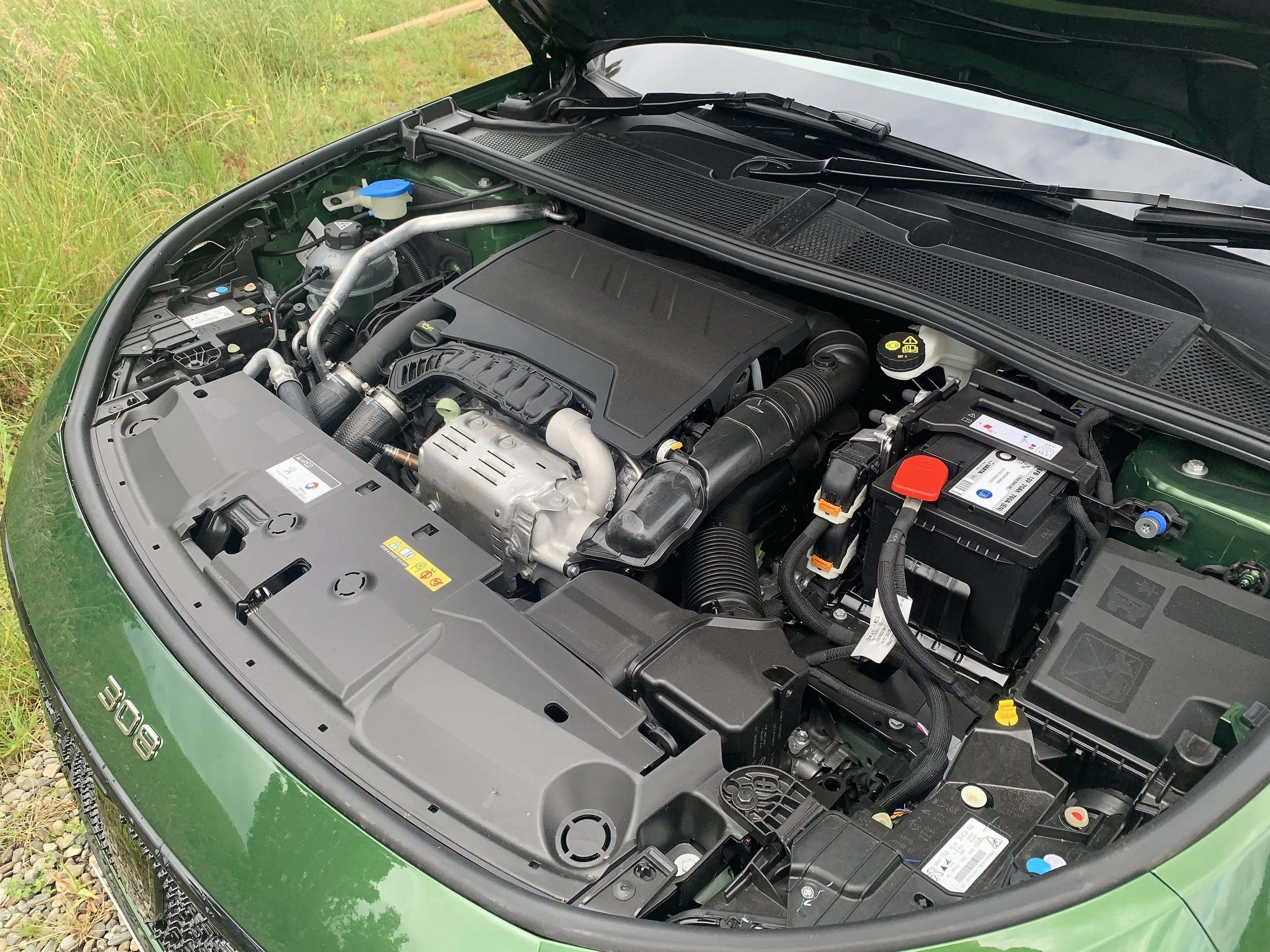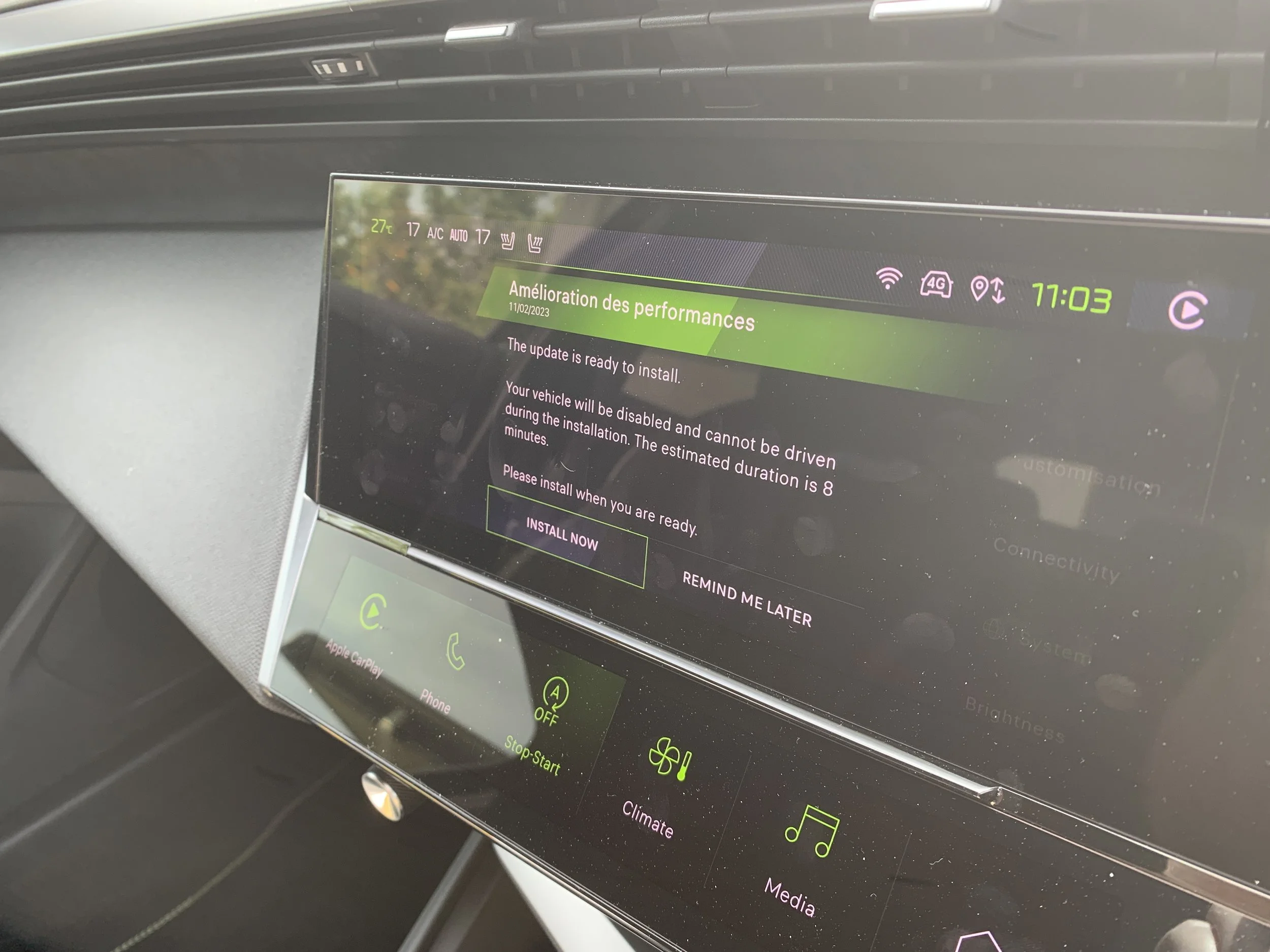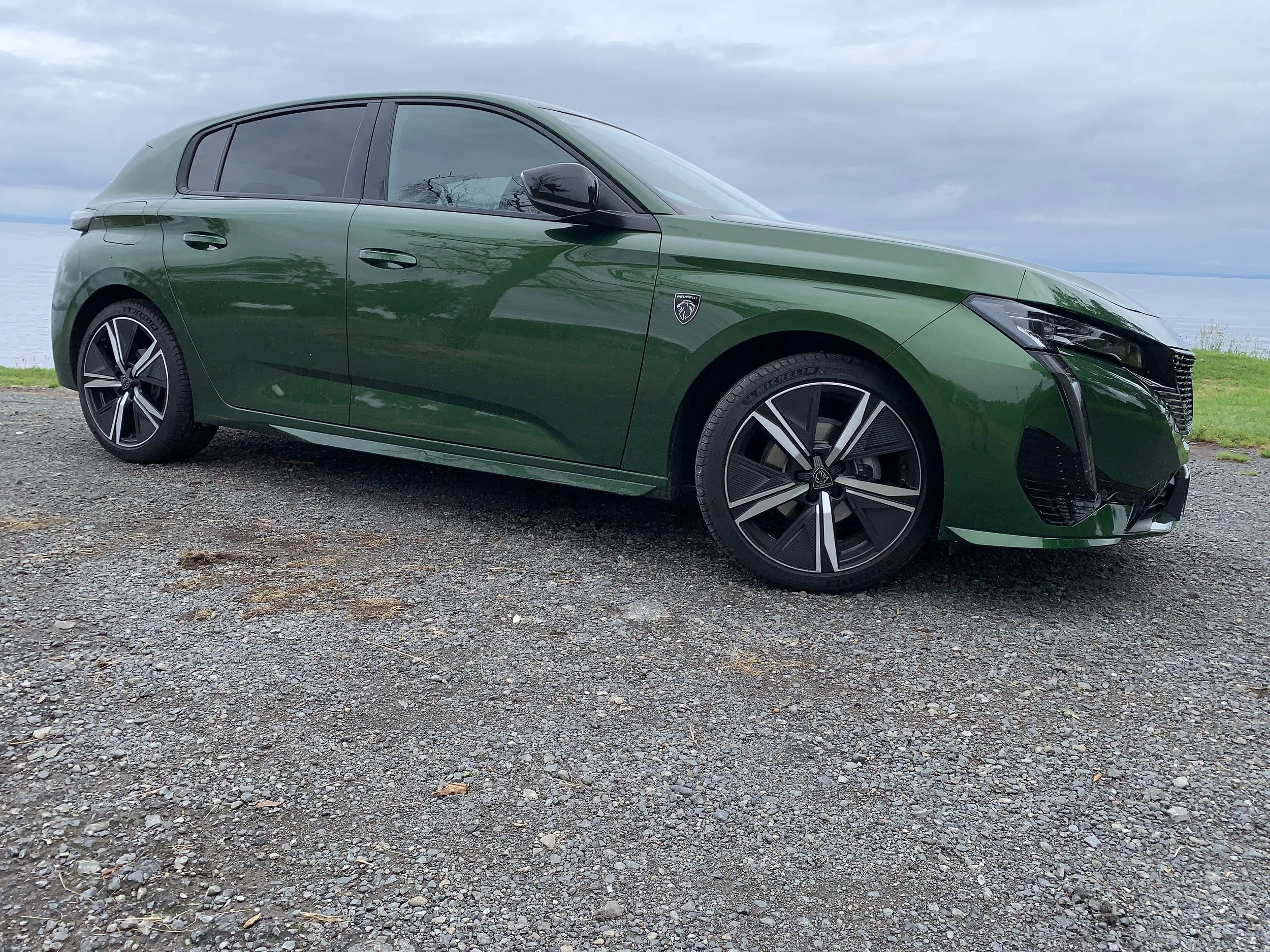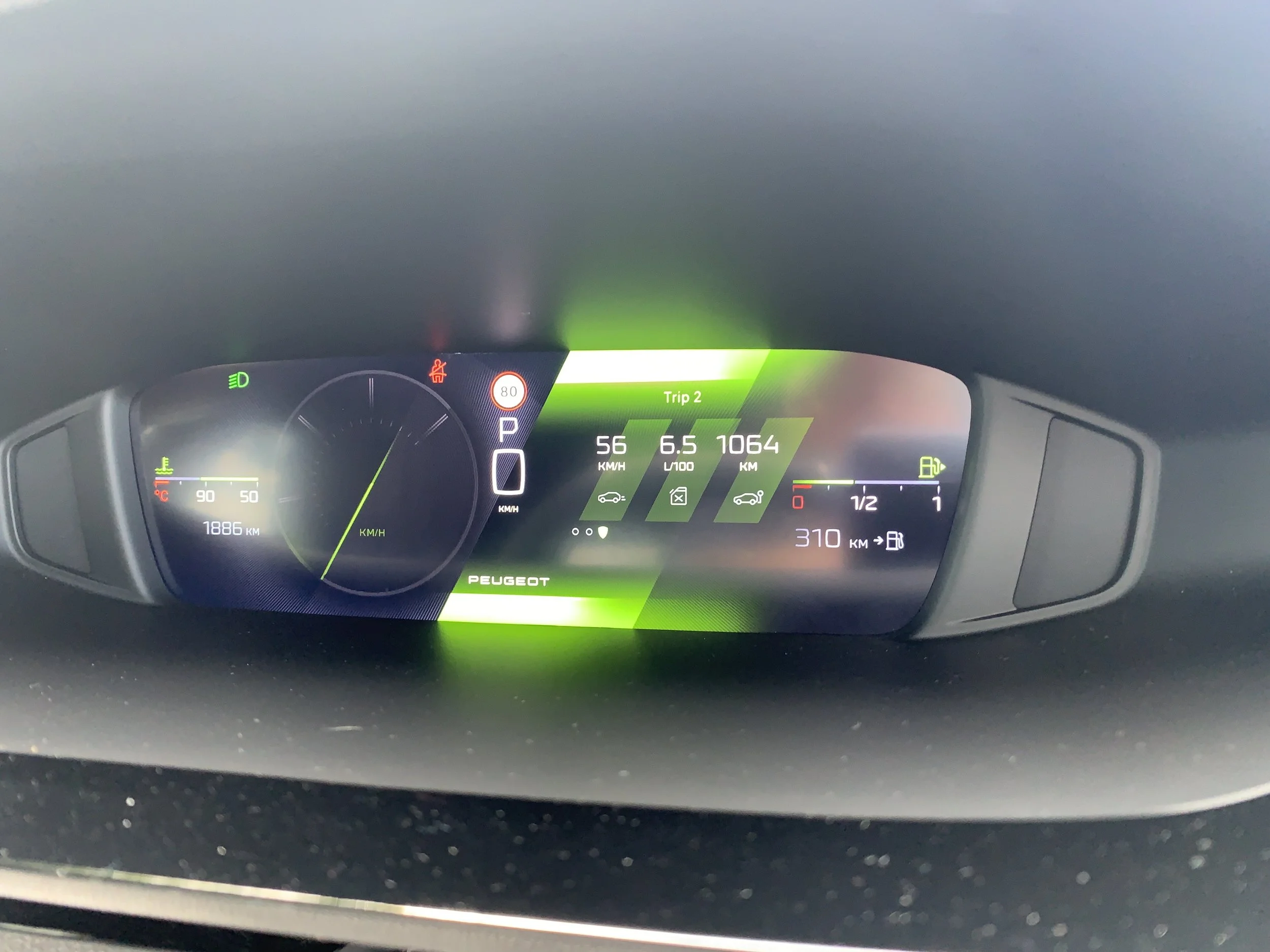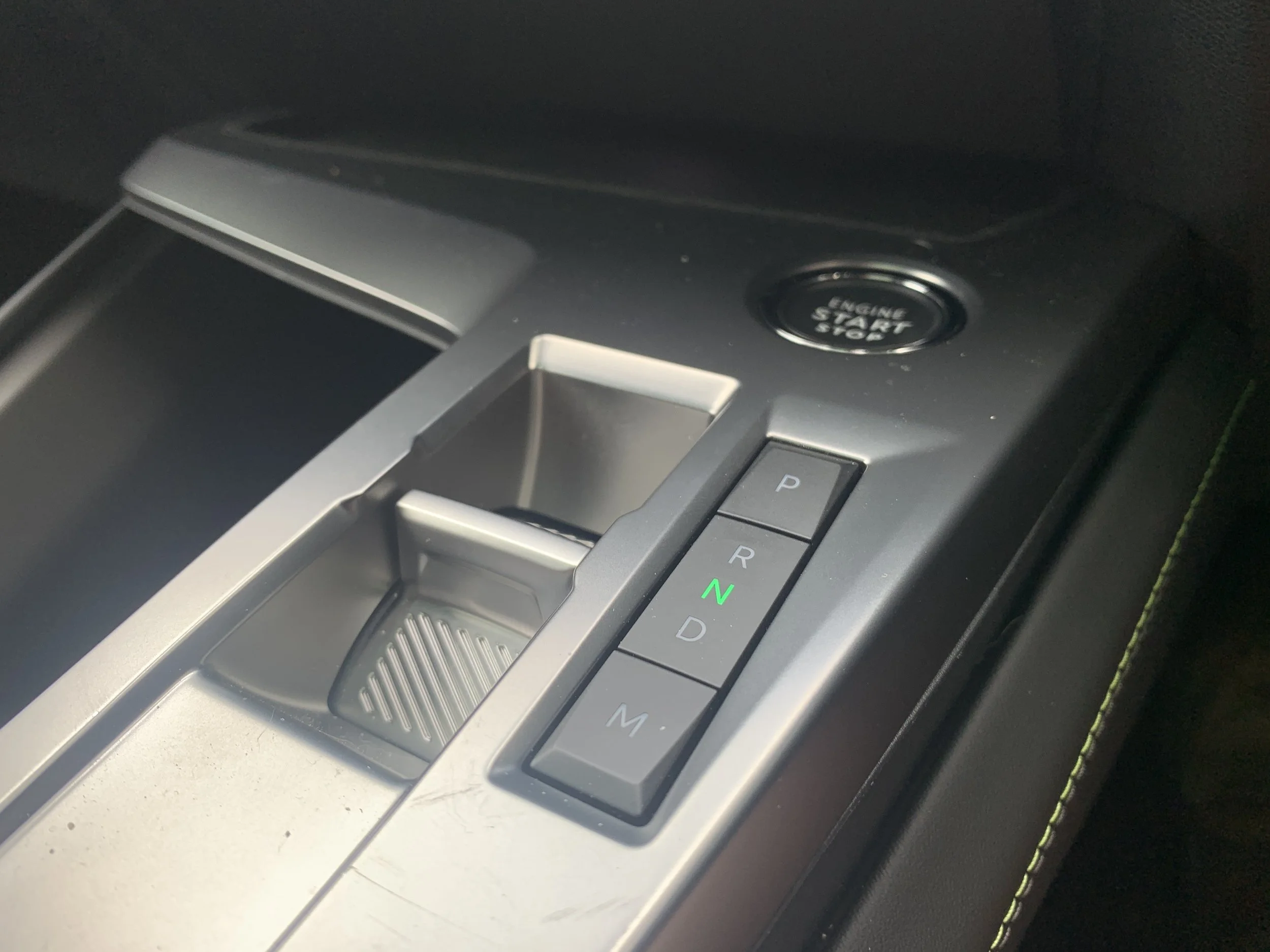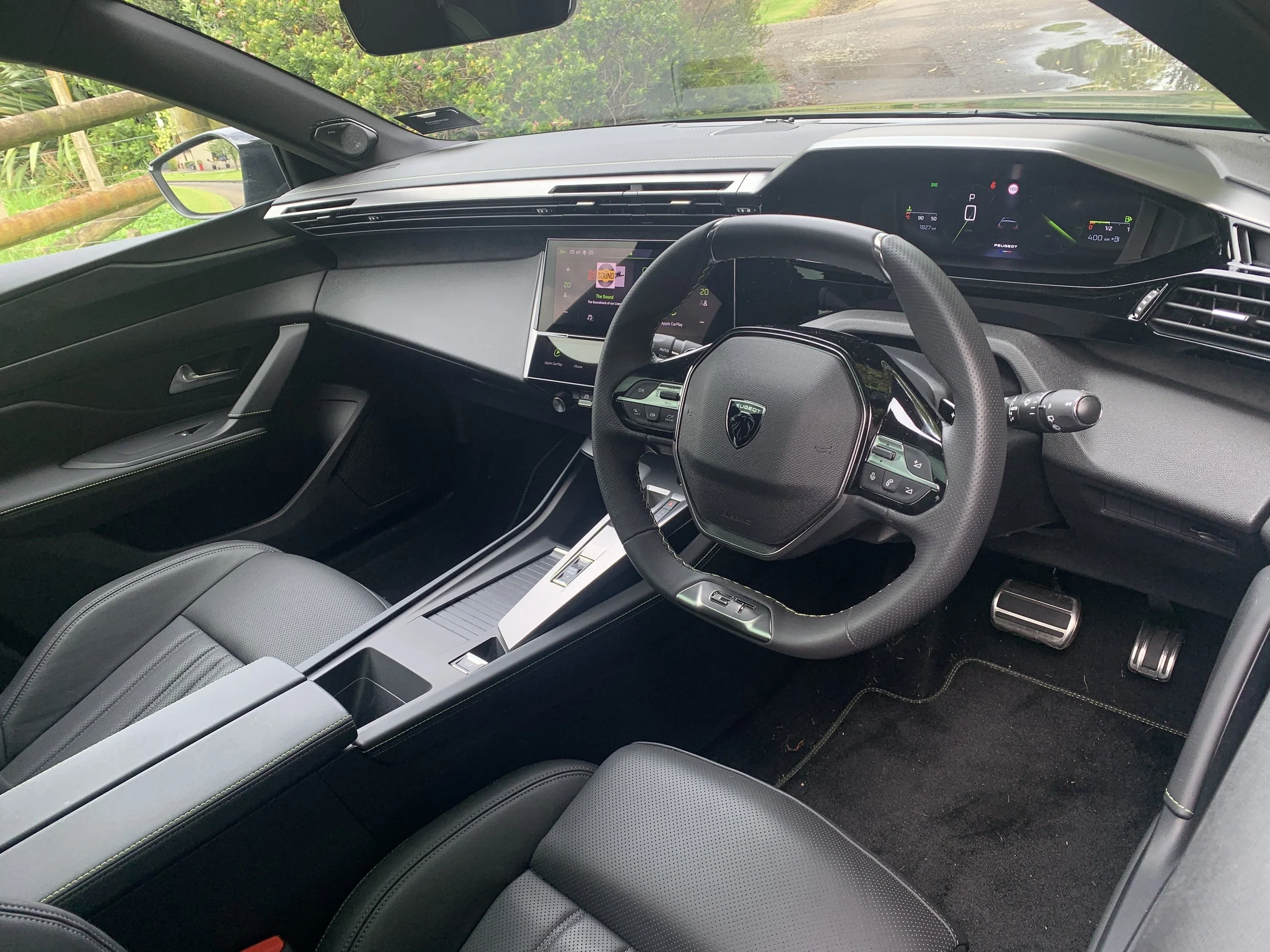Peugeot 308 GT roadtest review: Fashionably beating a trend
/Hatchback sales are declining, through consumer abdication to crossovers and the like. This car deserves to reverse that trend.
Price: $51,990
Powertrain and economy: 1.2-litre turbcharged inline-three, 96kW/230Nm, eight-speed automatic, FWD, combined economy 5.2L/100km, CO2 119g/km.
Vital statistics: 4367mm long, 1859mm wide, 1441mm high, 2675mm wheelbase, luggage capacity 412 litres, 18-inch alloy wheels.
We like: Characterful powertrain and dynamics, well-built and feature-packed.
Not so much: Tight in rear, a tad pricey once all must-haves are included.
CONSUMER tastes having swerved so strongly toward crossovers and sports utilities conceivably means compact hatchbacks really don’t quite have the ‘safe bet’ status they once enjoyed.
If one were to be entirely dispassionate, the Peugeot 308 GT that’s recently released in updated form – the changes highlighted by, but by no means restricted to, adoption of a bold new badge – would more comfortably serve market expectation if it was a 3008. The ‘double zero’ designation employed by the French brand is for cars of, quite literally, higher standing.
Don’t be surprised if that occurs. In the here and now we see something that should be a hard sell … but really doesn’t deserve to be. A French family hatchback with a small capacity yet feisty turbo petrol engine, concocted to mix it with the Volkswagen Golf and Ford Focus, plus the better versions of the Japanese and South Korean five-doors: Toyota Corolla and Hyundai i30, for starters, Honda Civic and Kia Cerato likely also.
It unquestionably looks good in that company, being funky, chic and just upmarket enough to stand out. All that and, yet, is the party already over? How long before the crowd it mixes with starts to thin?
Out of all the above mentioned, just the Golf appears to have any kind of secure future. Ford recently made clear that the Focus won’t live beyond 2025 and Hyundai and its sub-brand are being very vague about whether their DNA-sharing five-doors will survive beyond their current generations.
Toyota, at least in New Zealand, has already made a big decision with Corolla, by curtailing the sedan and supplanting the regular hatch for the Corolla Cross, which is much the same thing but with elevated ride height and the sort of butch styling that lends impression it might be able to drive off-seal. The logic is that this will revive this long-lived nameplate’s popularity. And, quite probably, it will.
Will hatchbacks disappear completely? Kiwis aren’t exactly doing a lot toward their conservation. Registrations statistics from 2022 show it was another year in which we again showed distinct preference for SUVs and crossovers. These – and several one-tonne utilities - were outselling ‘regular cars’ by almost ridiculous percentages.
The car market has always been one of changing constellations and shifting moods, but given that hatchbacks were so secure for so long, for decades being the car body type we could all agree on, mainly on grounds offered something for everyone, it’s hard to imagine the roadscape being devoid of them.
If historical reference counts, then French brands should feel most compelled to keep the concept alive. It’s their idea, after all. Even though the Golf was really the car that internationalised this body styling, the genre really traces back to the Renault 16, which went into production in 1965 and hung around until 1980.
Peugeot has since become France’s primary hatchback producer, and some past efforts have been extremely successful. The 308 as it presents now doubles down on the recipe. The GT is as good as it gets, and that’s very good indeed.
The car is stacked with talent and tech even before considering the Premium Pack option experienced on test, a finishing touch any buyer would want to consider, simply for the upgrade to Advanced Comfort front seats with heated/massage functions. The two back rub programmes, one slightly more aggressive than the other, were much appreciated and intensively used by Monsieur and Madam B when the car was used for a spur-of-the-moment distance drive, of four and a half hours each way.
Also impressing was the other upgrade item, the Focal premium stereo system. The route we drove took us out of regular radio range but, as we’re big podcast fans, that wasn’t a concern. Secondary country roads, chosen to avoid congestion and ridiculously low ‘Road to Zero’ speed restrictions on the main route, generated significant surface road, plus we had heavy rain for much of the return leg, yet the sound quality was above those extraneous influences – it’s one of those systems that doesn’t have to be turned up loud to be heard clearly.
These features, plus the trim being of a mix of Alcantara cloth and quality leather, impressed a level of premium-ness than delivered by previous versions of this car. Inevitably, that posh reflects in the price; a $51k buy-in as tested. Yet when a Golf can cost even more, and offer less, then it’s hard not think that the 308 GT isn’t cannily price-parked nonetheless.
Even if the cost extras aren’t included, the updated model compels as more of a kerbside sophisticate thanks to the facelift’s delivery of the make’s latest styling ingredients of LED 'fangs' down the bumpers and the spotty grille, along with more chiselled bodywork and the full-width rear light cluster. It’s bolder to point of brashness, but in the brilliant (to point of luminescent) metallic green, the car looked handsome and brilliant and a fitting setting for Peugeot’s new new lion emblem, which sees the old chromed poser replaced with a more regal lion's head motif on a black shield.
The interior? Well, it’s set to be a bit more divisive, yet having banged on in the past about how Peugeot’s penchant for a low-set, under-sized steering wheel forces the driver into a go-kart like position that sounds more fun than it often really is … well, in this instance, it really wasn’t too bad. Perhaps Peugeot has refined a few aspects, perhaps the whole driver-to-wheel-to-pedals involvement simply is less galling for larger people when it’s in a larger car. Perhaps (and this is a longer stretch) I’ve become less grumpy.
But, either way, this time the 308’s driving position felt a lot easier to live with than I recall it having previously been. Yes, the top of the steering wheel rim was, as always, below the high-set instrument dials. But the driving overall didn’t feel as oddball and off-setting as it has in other current models.
I appreciate that Peugeot has tried to clean the dashboard up slightly by removing most of the buttons and hiding their functions in the touchscreen, an attempt at minimalism I thought I might find vexing but didn’t.
At 12 inches, the new touchscreen is larger than the previous one and far more crisp in its appearance, plus the layout and operability is smarter than previously. There’s more logic to the configurable aspects and it’s also more prompt in its response to commands. Running Apple CarPlay, my preference, is a breeze and it’s also a wireless setup, though the shortage of computer chips means the pad your phone sits on doesn’t have the recharging capability it is designed to provide. There’s a handily-sited USB port for that.
The tech also allows for WiFi updates; during my time it insisted on being allowed to pick up an upgrade and, though I was a bit nervous about the outcome, I went ahead, albeit only after parking up first. The screen went blank for a few minutes then everything came on-line and seemed to operate perfectly.
Two days on, though, when the car started up I noticed the display would occasionally flicker; with just enough frequency to irk. Everything functioned as normal though and, when the car was restarted after a coffee break, the glitch disappeared and never returned over the four remaining days I had it. Quirky, right?
A higher-quality screen is not an isolated instance of improvement to the car’s interior ambience. The materials Peugeot is now using to dress the cabin are better than before, with tactile fabrics and more handsome plastics, and the build quality of this example was also pretty decent. The reason for the long drive was to visit dear friends who years ago accompanied us on a drive around Europe. That was in a brand-new Peugeot 406 and we quickly had to find a plastic bag in which to accumulate bits of trim as they dislodged. The 308 GT seemed much better assembled; not so much as a squeak. That’s hugely reassuring.
The 308's front seats were appealingly form-fitting and supportive, but you’d likely have to think carefully before offering up the rear space to adults. Headroom will be a little tight for tall passengers, and the same goes for the legroom. However, the bigger turnoff – one which came as a bit of a surprise – is that the rear seats aren’t as comfy as those up front.
There’s a feeling, too, that Peugeot has sacrificed some of the rear cabin space in pursuit of boot space. The luggage bay’s capacity of 412 litres is not class-best, but it's a more generous space than the Golf, Focus and, most particularly, the Corolla offers.
A three-cylinder petrol engine sounds like it would be too puny to move such a large car with any enthusiasm, but while the GT isn’t a greyhound off the line, it's fine once you're moving thanks to a generous amount of mid-range torque.
Overall, it is as much a gem of a thing here as in the smaller cars that also use it: Vibrant, zesty, more muscled than you’d expect and quite characterful, with a pleasant three-cylinder thrum emerging when it's pushed.
It’s not an outright tyre-smoker – as reflected by the slightly pedestrian 0-100kmh time of 9.7 seconds – and does drop a gear or two if you accelerate on the open road. On occasion, too, it needs a slight moment to gather itself when you want to take off quickly, which is perhaps a result of pairing an automatic with a small engine.
But it isn't too bad overall; again, in open road driving, except on really winding roads, I rarely found need to resort to using the paddle shifters - useful, because the main selector is now a recessed switch (which you’d hope won’t be a dust-gatherer) - to keep it on the boil. It's also pretty quiet at a cruise, too, thanks to the long gearing of the eight-speed automatic gearbox yet is able to keep up with traffic, not just on the flats but also in hilly terrain.
Efficiency is also admirable. Official tests showing the car will burn between 5.4 and 6.5 litres of petrol every 100km seem a good barometer; fittingly, the overall average from this test was the latter. There’s a hybrid inbound that does even better and we’re also in line for a full electric, but in the real world with fuel prices even as they are it’s not going to be an expensive accomplice.
The other advantage from the petrol-powered 308 is that it’s lighter than the electric-involved fare, which likely will mean it’ll potentially deliver a more engaged ride and handling experience.
Additional low-slung weight can be beneficial for ride comfort, though in its own right, the GT’s ride is hard to fault. It seems well-judged, supple and mature enough to soak up the bumps nicely, yet not so set up for comfort that it sacrifices handling deftness. It doesn’t wallow or pitch through corners and, though the steering feels a touch light, it’s nonetheless very accurate.
There’s a clear distinction between GT and GTi in Peugeot-speak. The latter is the one for rear wheel-lifting honing. But the GT still drives well; the leg home took us across a lot of standing water, and the manner in which the car maintained balanced even when traction was clearly slipping was hugely reassuring.
It's good in town, too. Easy to manoeuvre in tight spaces, with parking abetted by a camera that vastly improves rear visibility. Safety equipment tuned to urban driving includes active braking with pedestrian and cyclist detection; there’s a driver tiredness alert, too. Perhaps the stop-start system could be a little less enthusiastic. Every once in a while it re-engagement when pulling away in traffic occurred with rude abruptness.
All in all, though, it’s a car that very quickly found its way into our hearts. My wife, who is generally very hard to please when it comes to cars, was instantly entranced; not only with the friendliness of the operability but also with the colour. Green is usually a hue that brings out extreme views; but in this setting it really works.
The big question: Would we buy it? Erm … no. As much as it does everything right, and as often as we have other choices in the drive, we’re at heart a one-car family and with dogs and a reasonably active lifestyle, a sports utility just works better. I’m not saying that’ll be the case with everyone, but the sales rate for SUVs and crossovers speaks for itself, doesn’t it?
Still, there’s a lot of reasons why the 308 GT deserves to be wished bon chance. It’s a car that makes you think twice.




